Museum Nikolaikirche (St. Nicholas Church Museum), Berlin
Berlin’s Museum Nikolaikirche is a multi-faceted place. As well as the story of Berlin, it tells its own history, showcases religious music, and tells a story of East Berlin and its approach to heritage and preservation.
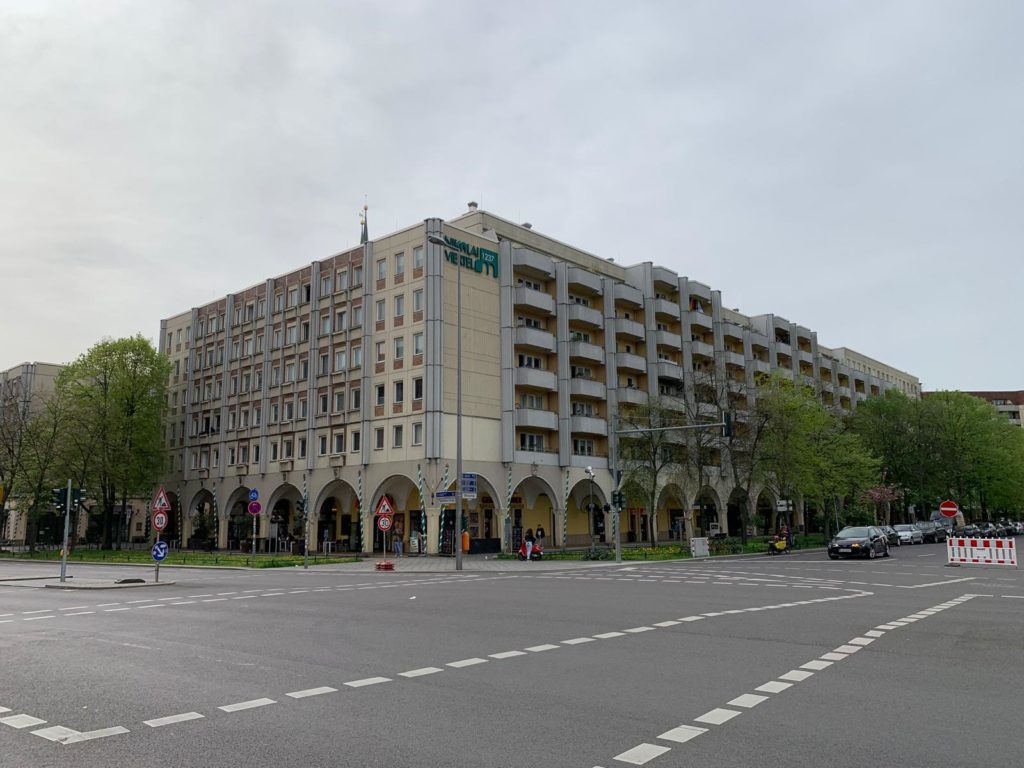

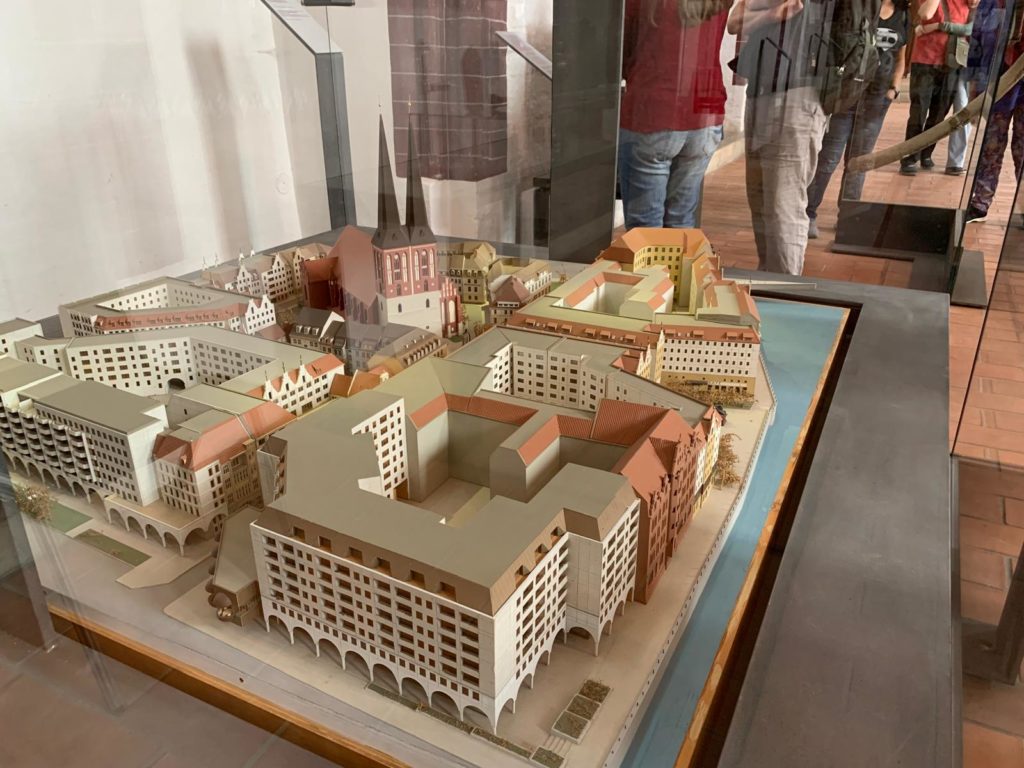
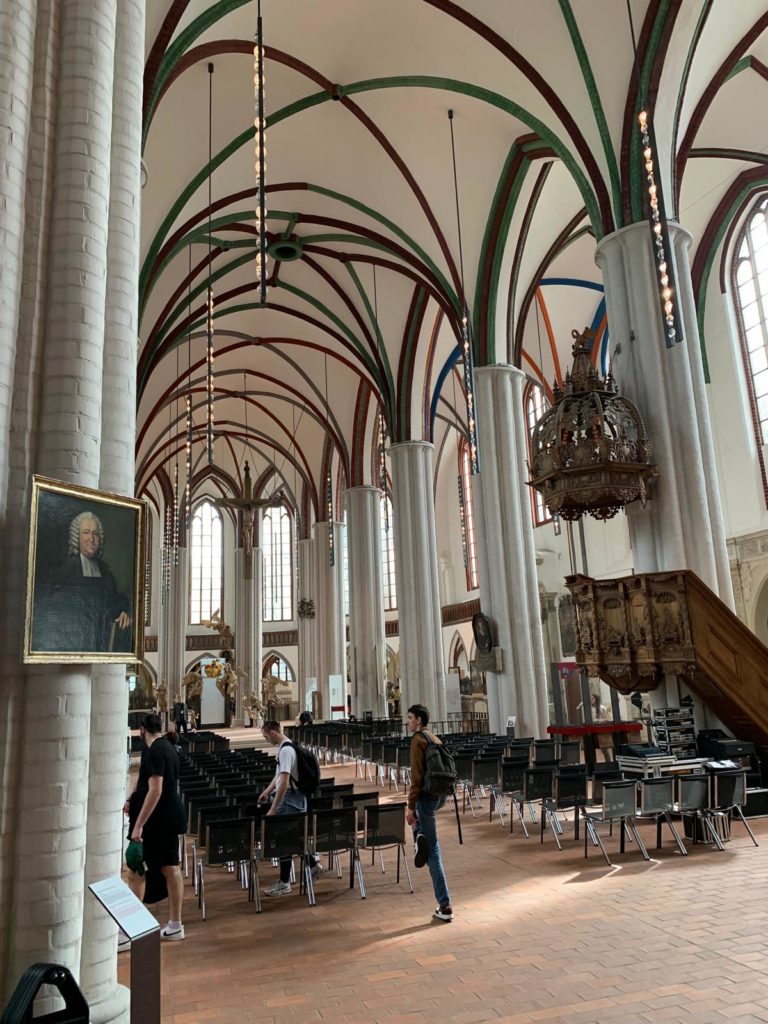
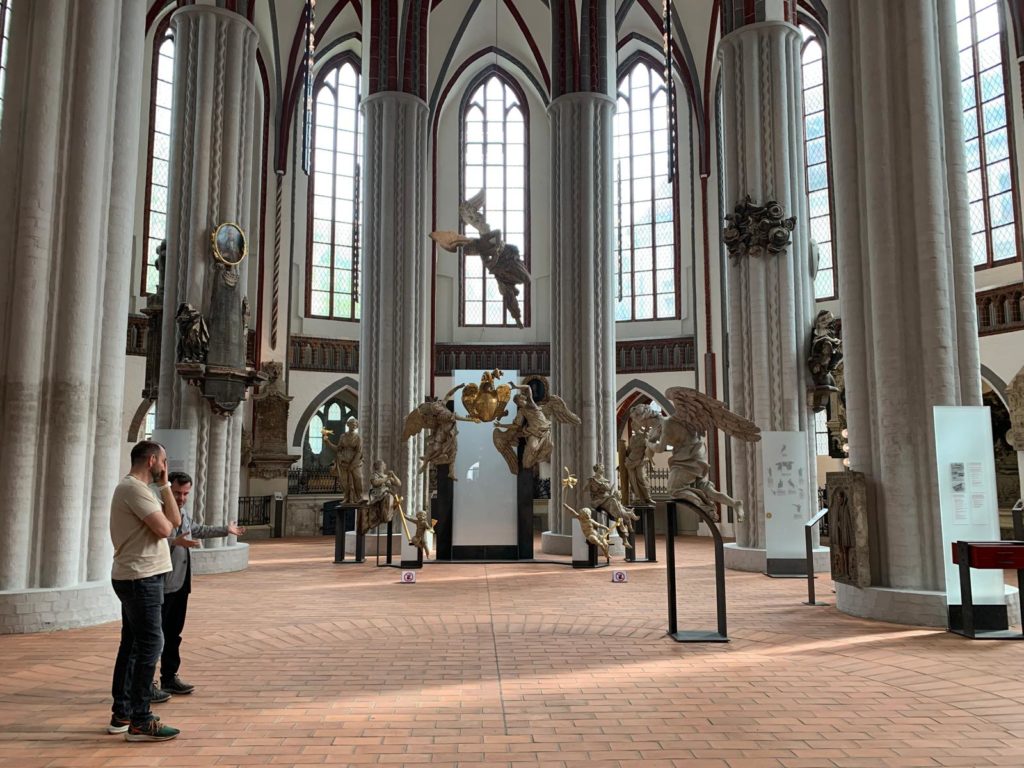

Introducing the Museum Nikolaikirche
On my recent long weekend in Berlin, I went to the Museum Nikolaikirche (Museum of the Church of Saint Nicholas) more or less on a whim. I had to be at the Humboldt Forum at a certain time, and had just enough time to look around the Nikolaiviertel (Nicholas Quarter). I wanted to see it because I was intrigued by the description in my guidebook: “[c]ommissioned by the East German government to celebrate Berlin’s 750th birthday, the twee Nicholas Quarter is a half-hearted attempt at recreating the city’s medieval birthplace around its oldest surviving building, the 1230 Nikolaikirche.” Would that tempt everyone? Probably not. But when I was not able to enter the nearby St Marienkirche due to a church service, and I realised I could go to the Museum Nikolaikirche for free as it was the first Sunday of the month: well, why would I not?
And in the end I found the short trip well worth the effort. Walking around the Nikolaiviertel, I enjoyed the socialist values encapsulated in its architecture. The rather unappealing exterior buildings. The blend of historic recreation and 20th Century functionalism inside. And ultimately the way that, despite what I’m going to assume was the DDR’s lack of enthusiasm about centring a late-80’s development around a church, the church is still undeniably the heart of this neighbourhood.
The reason that the DDR were able to redevelop the Nikolaiviertel as late as 1987 was that it was left in ruins for decades after WWII. Only eight buildings remained. The roof and towers of the St Nicholas Church were destroyed in bombings, followed by a collapse of more of the church in 1949. So what we see today is very much a rebuilding. Although, unlike Dresden, not so much a like for like replacement as a reinterpretation. What architect Günther Stahn called “an attempt at constructed memory”.

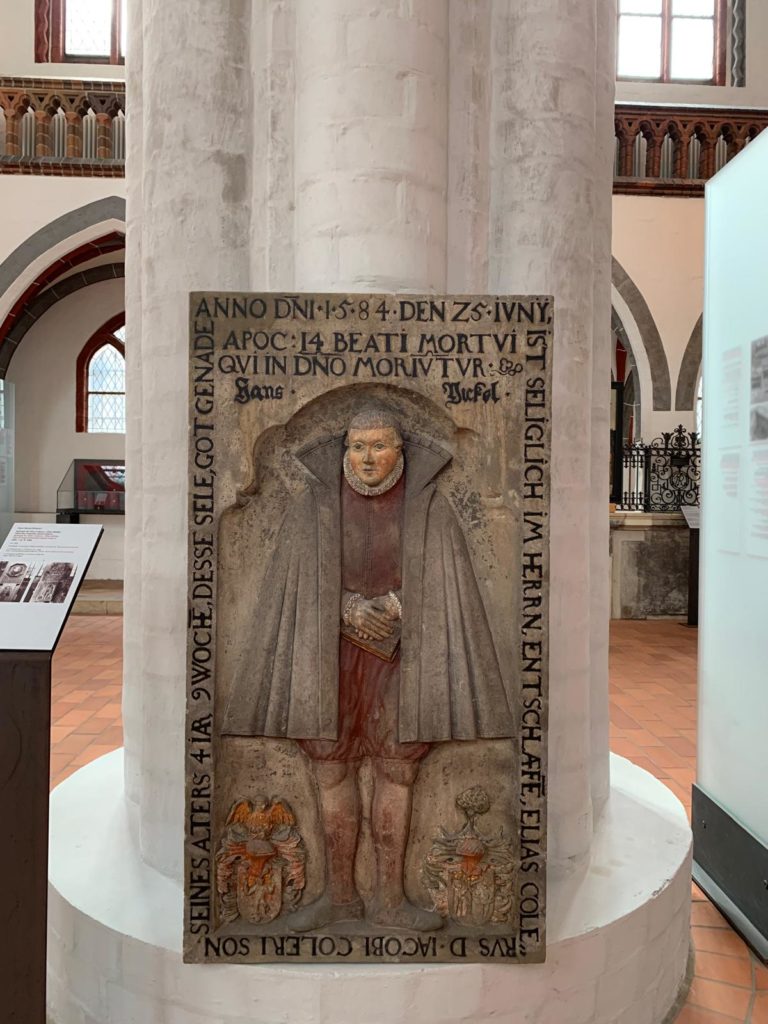
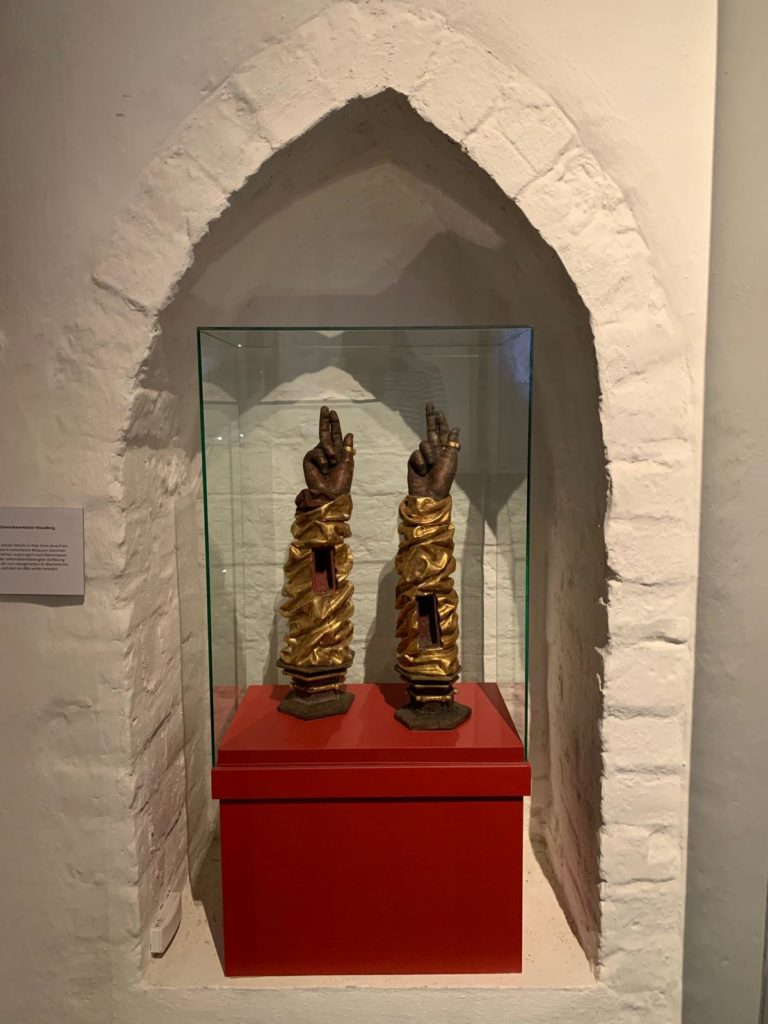
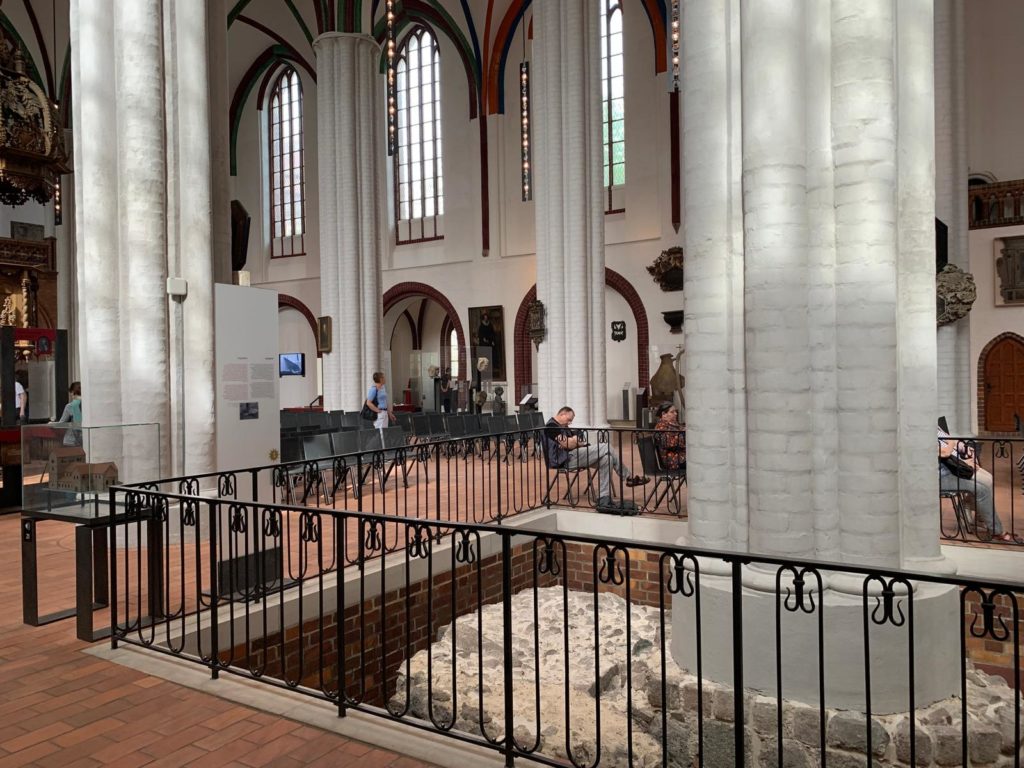
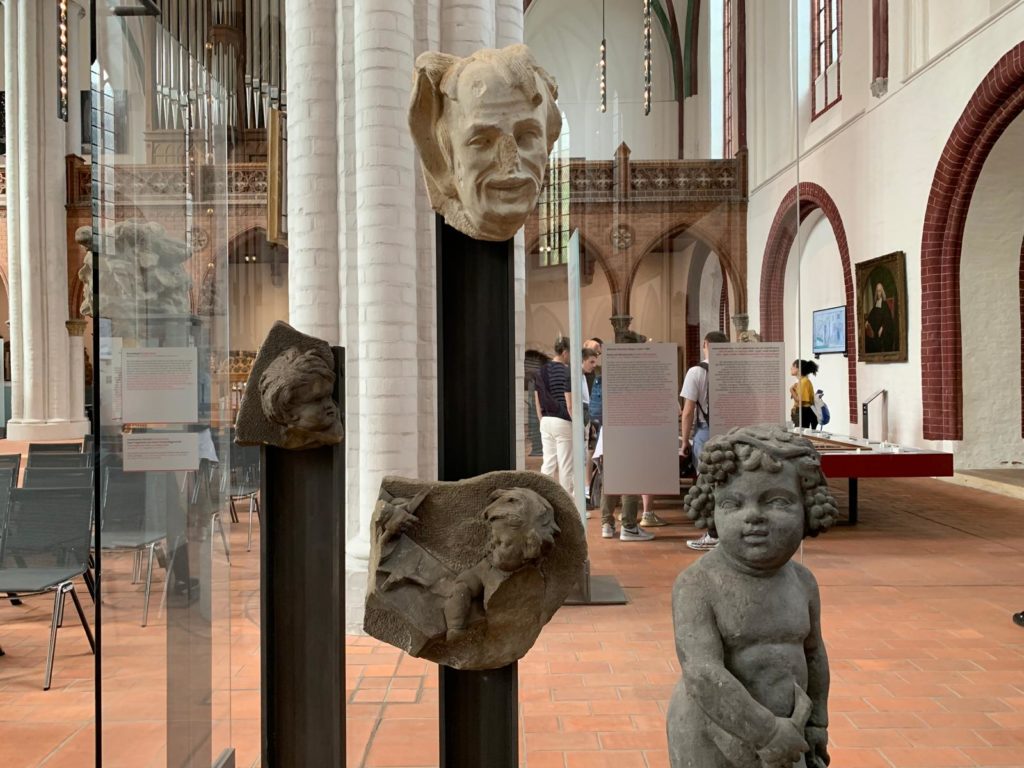
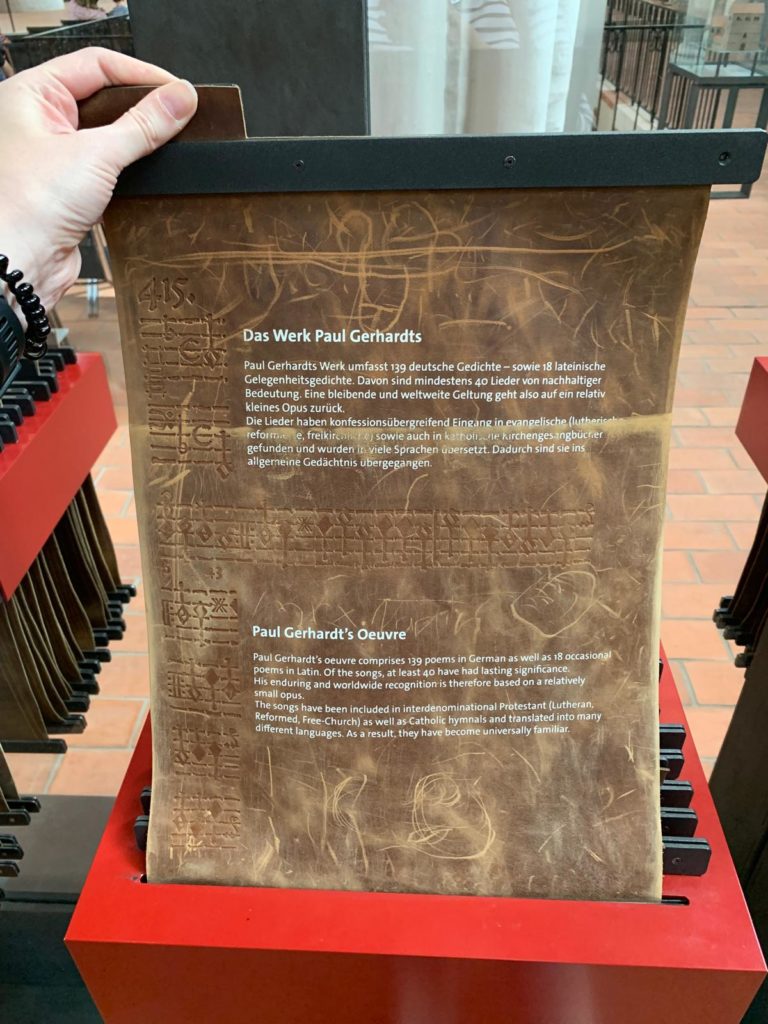
Inside the Museum
This reinterpretative element includes the church. Interestingly, the church ceased to be a functioning church even before WWII. The oldest building in the city, it was given over to the government in 1938 to use as a concert hall and ecclesiastical museum. So in that sense, what we see today is close to the pre-war intention for the building. But today’s Museum Nikolaikirche is not an ecclesiastical museum per se.
Instead, the Museum Nikolaikirche tells the story of Berlin’s development in the Middle Ages. And its own story as well: the architectural, ecclesiastical and musical history of this historic building. The 1980s restoration brought the church back to its late-19th century appearance (it was then it got its twin towers). The interior is empty of pews or any other furniture required by an active congregation. There is thus plenty of space for displays on medieval Berlin, fragmentary religious monuments and artworks, and so on. Upstairs the focus is more on music. There’s even a space where you can sit and overlook the nave while listening to different compositions from the church’s history.
For me the highlights were this musical rest stop, and the laying bare of the church itself. I am not at all familiar with religious musical compositions of the German Middle Ages. But it was nice to hear a selection of them, and read more about the people behind them. And with a lack of seating downstairs, it’s a good spot to sit and take everything in. And in terms of the laying bare of the church, by this I mean both the reconstruction and its interpretation. The church’s near destruction is also an opportunity in this sense: it allowed for archaeological discoveries. The church’s deconsecration, meanwhile, means there is no ceremony about the place. As visitors we get good glimpses behind the scenes into crypts, chapels and vestries.
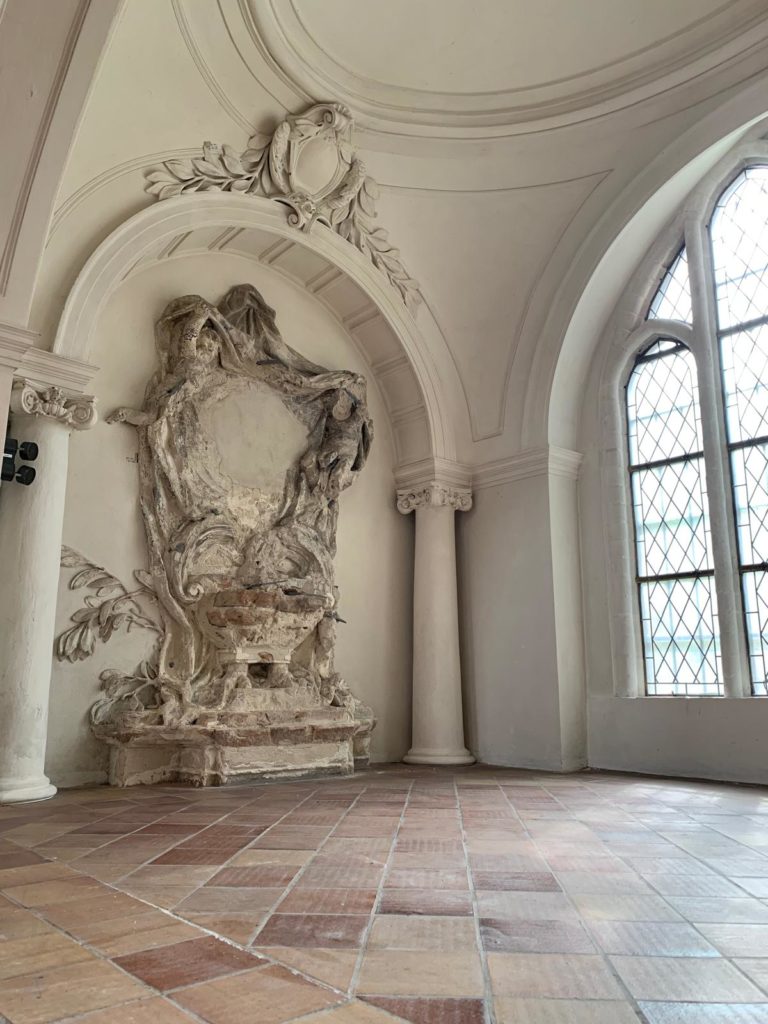
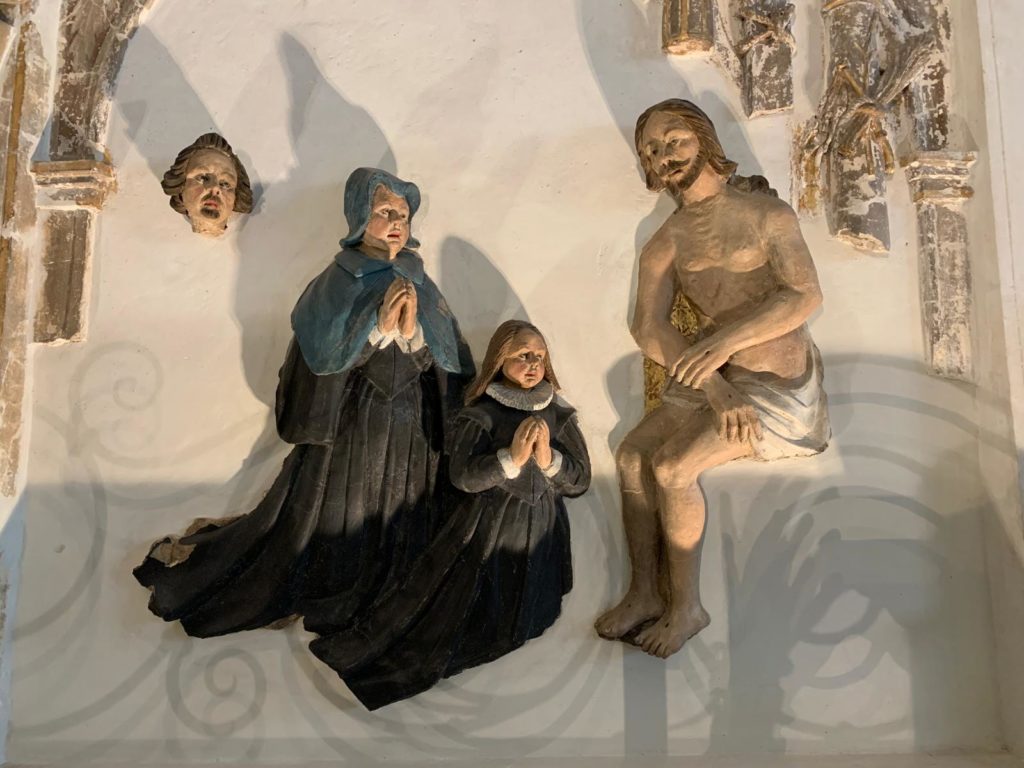

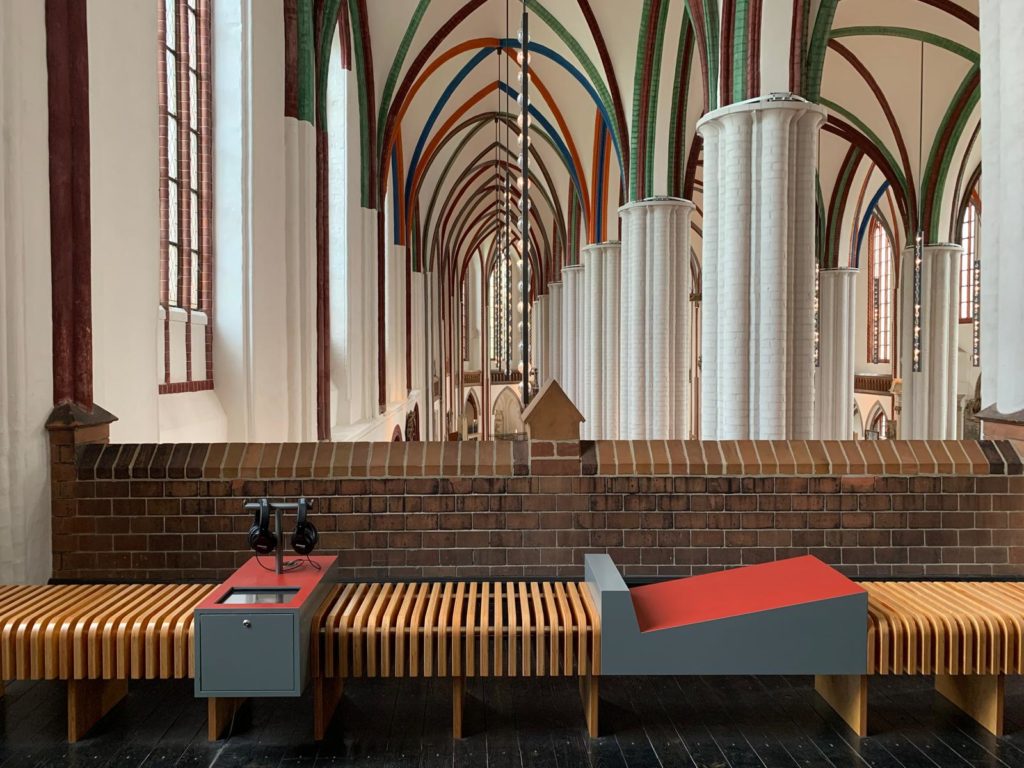
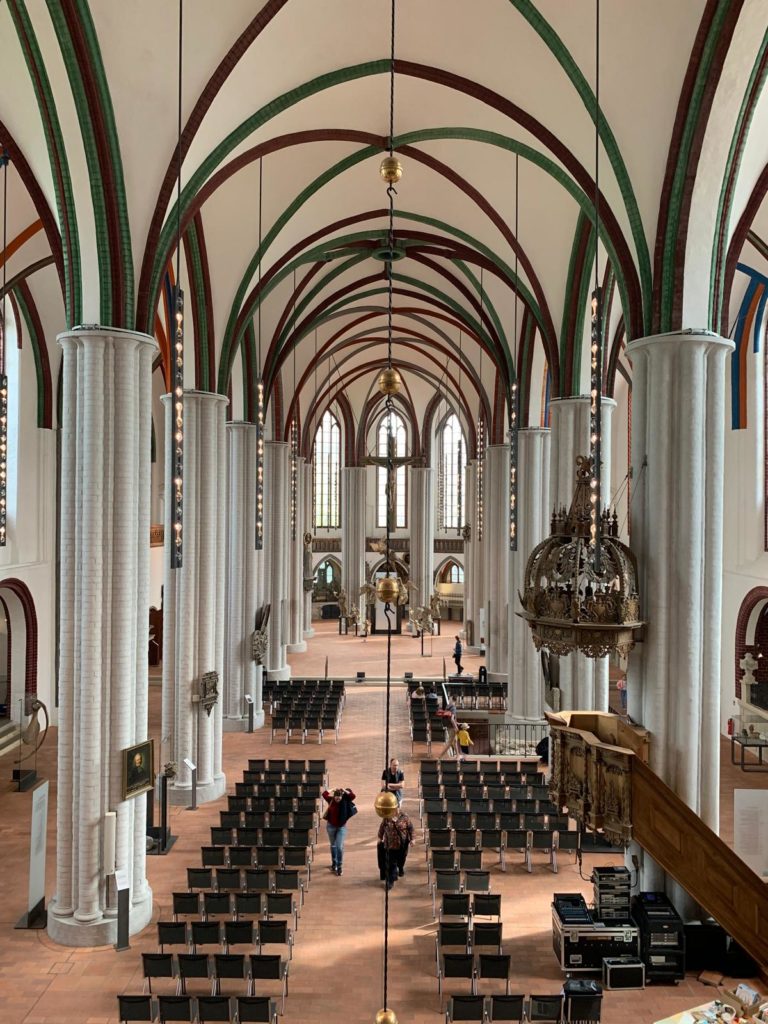
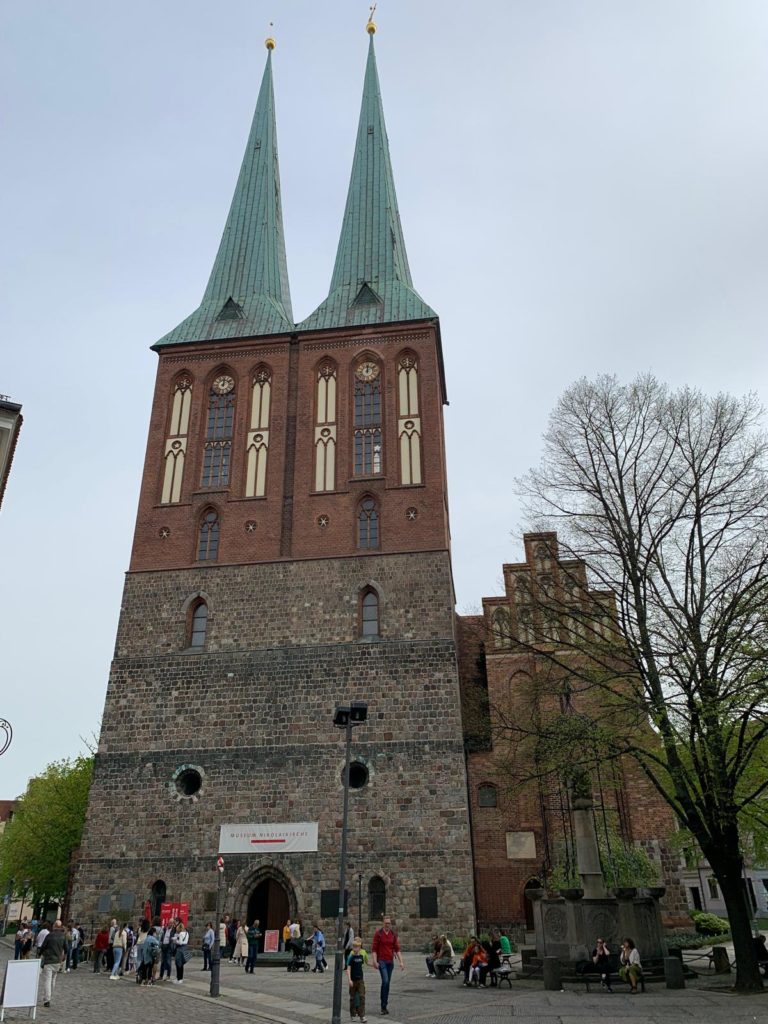
Final Thoughts on Museum Nikolaikirche
As a visitor with a casual interest in this museum, the free Sunday concept allowed me to visit it with no expectations. I could stroll in, see what I wanted to see, and not worry about ‘getting my money’s worth’. Perfect! And in terms of the museum itself, let me see… I have definitely seen stronger ecclesiastical museums, and stronger city history museums. The Museu d’Història de Barcelona comes to mind as a very different type of museum but which also repurposes historic buildings to tell a city’s story.
Ultimately I think the Museum Nikolaikirche is something different. If you come here expecting to understand the development of Berlin, you may be disappointed. But what you will come away with is an understanding of how this particular building has weathered different moments in the city’s history. This is where Berliners decided to become Lutheran during the Reformation, for instance. In the 17th century minister/hymn writer Paul Gerhardt and musical director/composer Johann Crueger made it an important centre for music. We’ve already spoken about what its destruction and reconstruction tell us about the vagaries of 20th century history in Berlin.
There is something reassuring about buildings in this sense. Especially long-standing buildings like churches. They might change, they might fare better at some times than others, but they see a lot over the centuries. And the Museum Nikolaikirche, with its combination of artefacts, information and interactives, gives an opportunity for this building to tell its story.
Salterton Arts Review’s rating: 3/5
Trending
If you see this after your page is loaded completely, leafletJS files are missing.

